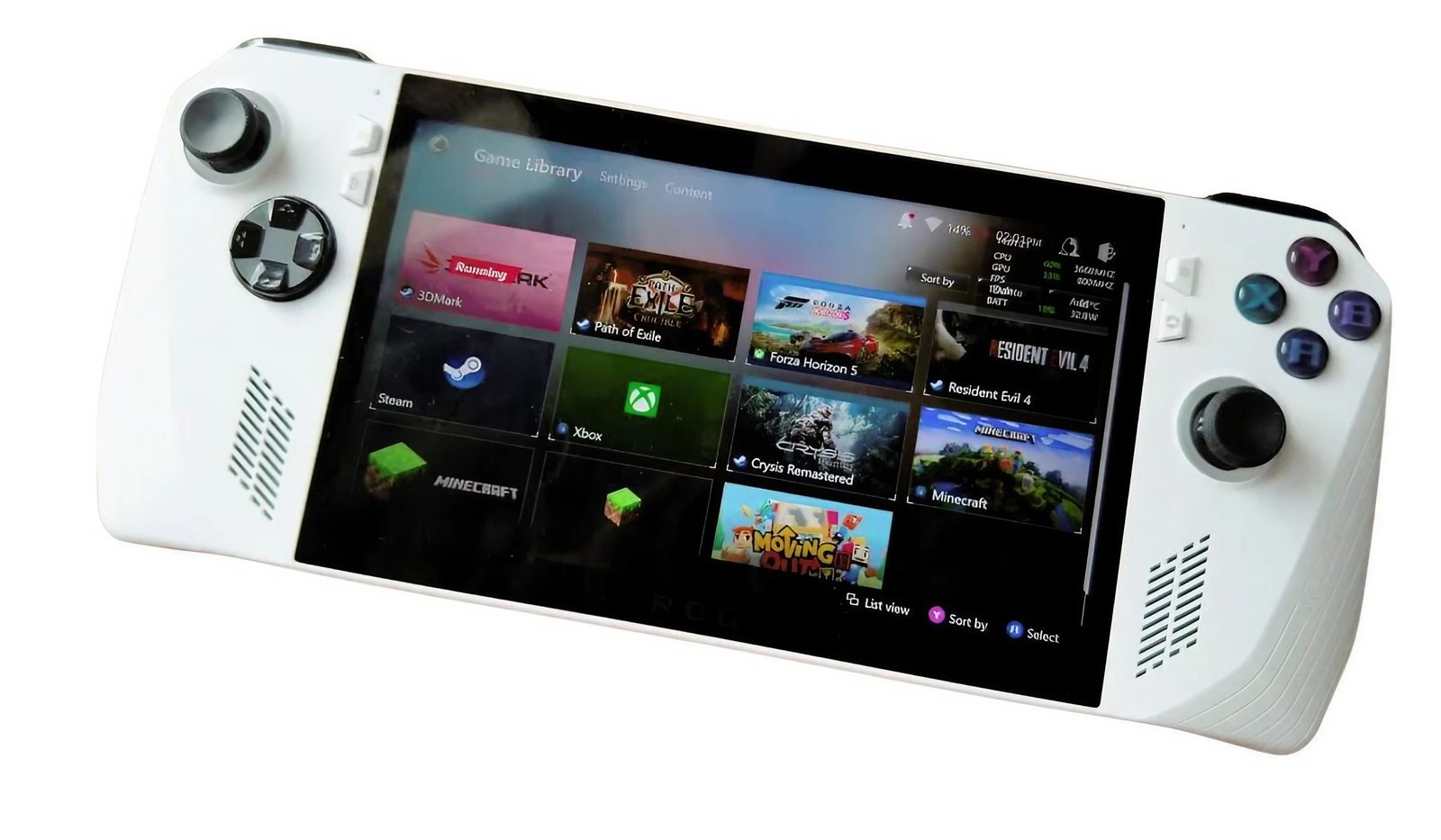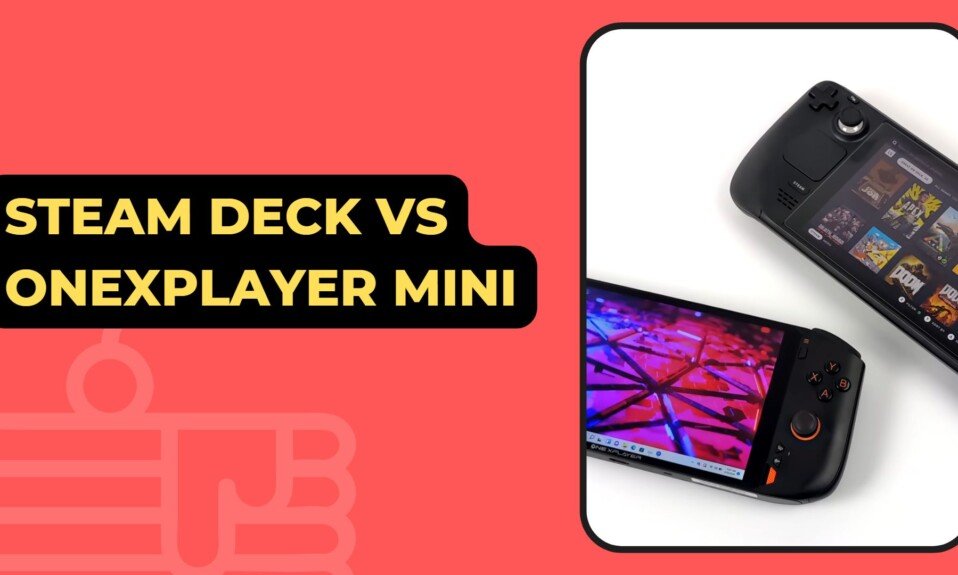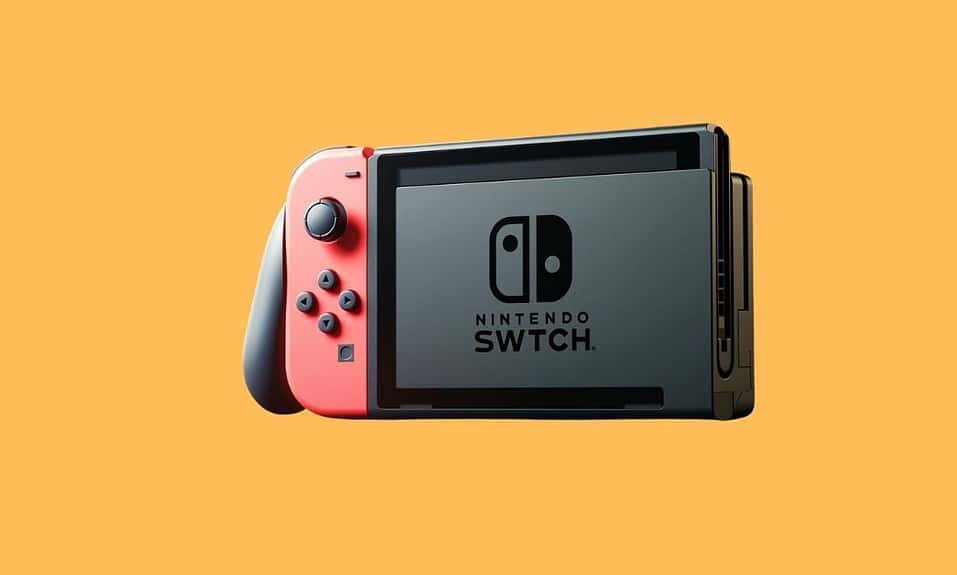Steam Deck vs Asus ROG Ally vs Lenovo Legion Go: High-performance portable gaming consoles are taking the world by storm. The Steam Deck started this trend, and many followed its footsteps. While some companies designed consoles based on Android, focusing on casual or streaming-based games, others targeted serious gamers by creating powerful handheld computers. The ASUS ROG Ally, the Lenovo Legion Go, and, of course, the Steam Deck, all fit into this category.
Selecting the ultimate gaming handheld device is no simple feat, and the recent additions to the market have made this choice even more tantalizing. We’ve got the Steam Deck, Asus ROG Ally, and the newly introduced Lenovo Legion Go, all battling it out to be the king of portable PC gaming. So which one should you bet your gaming hours on? Let’s dive into this three-way face-off to find out!
So, which one tops the list? Which console offers the best performance? And which one gives you the most bang for your buck? Today, we’re diving deep to answer these questions by comparing the Steam Deck, ASUS ROG Ally, and Lenovo Legion Go.
Specifications
| Steam Deck | ASUS ROG Ally | Lenovo Legion Go | |
|---|---|---|---|
| Brand | Valve | ASUS | Lenovo |
| Dimensions | 298 x 117 x 49 mm | 280 x 111 x 21.2 mm | 299 x 131 x 41 mm |
| Weight | 669 g | 608 g | 854 g |
| Screen | 7 inch HD | 7 inch Full HD | 8.8 inch QHD+ |
| Pixel | 1280 x 800 | 1920 x 1080 | 2560 x 1600 |
| Refresh rate | 60 Hz, 400 nits | 120 Hz, 500 nits | 144 Hz, 500 nits |
| Processor | AMD Zen 2 (4 cores, 8 threads) @ 3.5 GHz | AMD Ryzen Z1 Extreme (8 cores, 16 threads) @ 5.1 GHz | AMD Ryzen Z1 Extreme (8 cores, 16 threads) @ 5.1 GHz |
| Graphics | AMD Radeon (8 units) RDNA 2. Up to 1.6 GHz | AMD Radeon (12 units) RDNA 3. Up to 2.7 GHz | AMD Radeon (12 units) RDNA 3. Up to 2.7 GHz |
| RAM | 16GB LPDDR5 | 16GB LPDDR5 | 16 GB LPDDR5X |
| Storage | 64, 256, 512 GB | 256, 512 GB | 256, 512, 1 TB |
| Expandable | Up to 1 TB | Up to 1 TB | Up to 2 TB |
| Sound | Stereo speakers, dual mic | Dolby Atmos stereo speakers | 2W stereo speakers |
| Connectivity | Wi-Fi 5, Bluetooth 5.0 | Wi-Fi 6E, Bluetooth 5.2 | Wi-Fi 6E, Bluetooth 5.2 |
| Battery | 40 Wh | 40 Wh | 49.2 Wh |
| Runtime | 2-8 hours play | 2-7 hours play | min 2 hours play |
| Charger | 45W | 65W | 65W |
| OS | SteamOS 3.0 | Windows 11 Home | Windows 11 Home |
All three consoles have impressive specs. But the Lenovo Legion Go shines the brightest with its 8.8-inch screen. It displays games in a super clear 2560 x 1600 resolution and has a super-fast 144Hz refresh rate. When we compare batteries, Lenovo’s 49.2 watt-hour battery lasts longer than Asus’s 40 watt-hour one. So, if you have a Legion Go, you can play games for a longer time without a break.
The winner is the Lenovo Legion Go because of its awesome screen and long-lasting battery.
Steam Deck vs Asus ROG Ally vs Lenovo Legion Go
In 2022, Valve introduced the Steam Deck and paved the way for portable gaming. Although the Nintendo Switch existed, it was different, so Valve didn’t have many models to inspire their design. As a result, the Steam Deck looks a bit like a prototype. It’s decent, but the joysticks feel far apart. You need to stretch your fingers to use them. The double trackpad, while useful for browsing, takes up a lot of space.

The ASUS ROG Ally catches a gamer’s eye with its sleek design. Sharp lines and bright RGB lights give it a cool appearance. It fits comfortably in your hands because of its uneven button layout and weighs the least among the three consoles. However, it lacks a trackpad. To browse, you either touch the screen or use the joysticks. The highlight? You can connect an external graphics card using the ROG XG Mobile interface to boost its power, thanks to its excellent cooling system.

The Lenovo Legion Go stands out for its adaptability. Like the Nintendo Switch, you can remove its controllers. The right controller even has an ‘FPS mode,’ allowing you to use it like a mouse. It features a back wheel, trackpad, and glowing controllers. Special sensors in the joysticks prevent them from drifting, and you can customize many of its buttons. On the downside, its speakers aren’t on the front, which affects the sound quality. Also, it’s the heaviest console among the three.

Design
Design is subjective, and each device has its charm. The Steam Deck offers a balanced weight distribution and a design meticulously crafted for gaming comfort. Moreover, it’s DIY-friendly, allowing for easy fixes. On the other hand, the Asus ROG Ally is compact, lightweight, and sports a futuristic design. But the surprise MVP in design is the Lenovo Legion Go. It might be chunkier, but it offers detachable controllers (think Nintendo Switch), ensuring both solo and multiplayer fun. Its robust build and the nifty kickstand add points to its score. Winner: Lenovo Legion Go. Its versatility and comfort are unmatched.
Price
When it comes to pricing, there’s a clear leader: the Steam Deck. Starting at a modest $449.99 for the 64GB model and stretching to $650 for the 512GB variant, it’s the most wallet-friendly option available. Both the Asus ROG Ally and the Lenovo Legion Go command a higher price of $799. However, there is a more affordable Asus model at $599.99, presumably a counterpart to a lower-tiered Lenovo offering. Winner: Steam Deck. If you’re budget-conscious, this is your go-to!
Display
All three consoles have touch screens made of IPS. But they do have some differences.
The Steam Deck has the simplest screen. It’s 7 inches and offers just a bit better than HD quality. It also has a 60 Hz refresh rate. For today’s gamers, this might not be enough. We get that the Steam Deck started the trend, but we’re comparing these three, so we’re being honest.
The ASUS ROG Ally ranks second. It has a 7-inch screen with Full HD quality and a faster 120 Hz refresh rate. Why do we like it? It’s a good mix of size and quality, which means games will run smoothly. The super-high resolution of the Lenovo Legion Go might slow some games down.
And then there’s the Lenovo Legion Go. Lenovo went all out with this one. It has the biggest screen of all three, measuring 8.8 inches. The quality is fantastic: it’s Quad HD+ (that’s really good!), has a super-fast 144 Hz refresh rate, and shows colors brilliantly with 97% of the DCI-P3 color spectrum.
Performance
The Lenovo Legion Go and the ROG Ally are almost twins in performance. Why? Because they both have the same strong engine inside, named the AMD Ryzen Z1 Extreme. Imagine this engine having 8 small brains (called cores) and 16 threads. Both consoles also have the same type of graphics card with 12 cores from RDNA 3.
But there’s a twist! The Lenovo’s big screen resolution might make some games run slower. On the other hand, the ROG Ally is a superstar. It smoothly plays almost any game. Take a challenging game like Cyberpunk 2077; the ROG Ally can handle it on medium graphics settings. But remember, it’s still not as mighty as a gaming laptop or a big computer.
Here’s a fun thing about the ROG Ally: you can plug in an extra graphics card to boost its power! The special ROG XG Mobile connector lets you do this. Imagine adding the super-powerful Nvidia RTX 4090 card. Then, nothing can beat it!
Now, the Steam Deck is a different story. Right from the start, people said it’s just alright, not super powerful. Can it handle tough games? Sure, but you might need to set the graphics a bit lower, even on its own screen. It runs on an older engine named Zen 2, which has only 4 cores and 8 threads. Also, its graphics use 8 cores from RDNA 2. So, it’s not surprising that it might struggle a bit.
Storage
Let’s dive into memory talk! All three consoles come with 16 GB of RAM. But, while ASUS and Valve have LPDDR5, Lenovo steps up with LPDDR5X. What about space to save your games? Lenovo’s Legion Go wins with a huge 1 TB of space.
The others give you 512 GB, which is still a bunch. They all store games on super-quick SSD storage. Plus, if you want more space, you can pop in a microSD card. But a heads-up: if you pick the cheapest Steam Deck, its storage uses eMMC 5.1, and that’s a bit slower.
Operating System
The ROG Ally and the Legion Go run on Windows 11. This is cool because you can play a bunch of games from places like Steam, Epic Games Store, Xbox Game Pass, GeForce Now, and more.
But the Steam Deck is a bit different. It works with its special system called SteamOS, which is a kind of Linux. So, it mainly plays games from Steam. Even though Steam has tons of games, it doesn’t have everything that the other two consoles can play.
However, there’s something neat about SteamOS: it’s really user-friendly for handheld consoles. In this way, the Steam Deck stands out and is better than the others. The ROG Ally and Legion Go, using Windows 11, are a bit trickier to handle on handheld devices. But, here’s a cool tip: if you know a lot about tech, you can try putting Windows on the Steam Deck to play even more games! Just keep in mind, this isn’t an official trick, and it might have some glitches.
Battery Life
The Steam Deck and the ASUS ROG Ally both have 40 WHr batteries. But the Lenovo Legion Go packs a bigger punch with a 49.2 WHr battery. You might think, “Oh, Lenovo should last the longest because of its big battery!” But wait – its screen shows super sharp and clear pictures, and that can eat up battery juice quickly.
Remember, the battery life can change based on what you’re up to. Playing a shiny, new game will drain the battery faster than playing a chill, old-school game. And if you choose high-quality settings or use the power-saving mode, that can make a difference too.
So, what do the companies behind these cool consoles tell us? Valve tells us the Steam Deck can keep playing for 2 to 8 hours. ASUS claims the ROG Ally can play for 2 to 7 hours. And the Lenovo? It might need a charge in less than 2 hours if you’re tackling super big games.
Now, how about charging speeds? The Lenovo and ASUS consoles can zoom up with a 65W charger. The Steam Deck takes it easy, charging with a 45W charger.
Verdict
After evaluating all aspects, the Lenovo Legion Go emerges as the reigning champion. Its design, reminiscent of the Nintendo Switch, combined with a high-resolution screen, powerful internals, and an enduring battery, makes it the top contender in portable PC gaming. That’s not to say the Steam Deck and Asus ROG Ally aren’t worth their salt. They have their strengths, but Lenovo, with some extra time on its side, crafted a gem in the handheld gaming arena. Overall Winner: Lenovo Legion Go. It’s the MVP of portable gaming at this moment.
- 256 GB Steam Deck: Starting at $399
- ASUS ROG Ally 256 GB: Starting at $599
- Lenovo Legion Go 256 GB: Starting at $699
Although the Steam Deck offers a cheaper 64 GB base version, its eMMC storage isn’t as efficient. So, comparing based on that wouldn’t be fair. The price difference between the cheapest and the most expensive console is 299 USD. This substantial difference might make you lean towards the Steam Deck. But remember, the Steam Deck is the oldest model, and time hasn’t been kind to it. While it paved the way for others, it wouldn’t be our top pick.
Now, let’s consider the Lenovo and ASUS consoles. Both are incredibly powerful, and we’re fans of both. Their performance is quite similar, and their prices aren’t too far apart. So, which one should you pick? It boils down to your needs:
Lenovo Legion Go: Choose this if you want total versatility and a top-notch screen. It offers the most storage options (up to 1 TB + microSD). However, keep in mind that its screen might affect battery life and performance. But, adjusting settings can fix this.
ASUS ROG Ally: This console matches the Lenovo’s performance. Although its controls might be a bit restrictive, it uses its hardware better because of its screen resolution. Plus, if you’re not worried about spending a bit more and want the best gaming experience, it’s the only console that lets you boost its performance with the ROG XG interface.
In summary, consider your needs and budget when choosing the right console. Both the Lenovo and ASUS have their merits, while the Steam Deck might appeal to those looking for a cheaper option.




